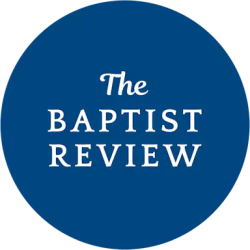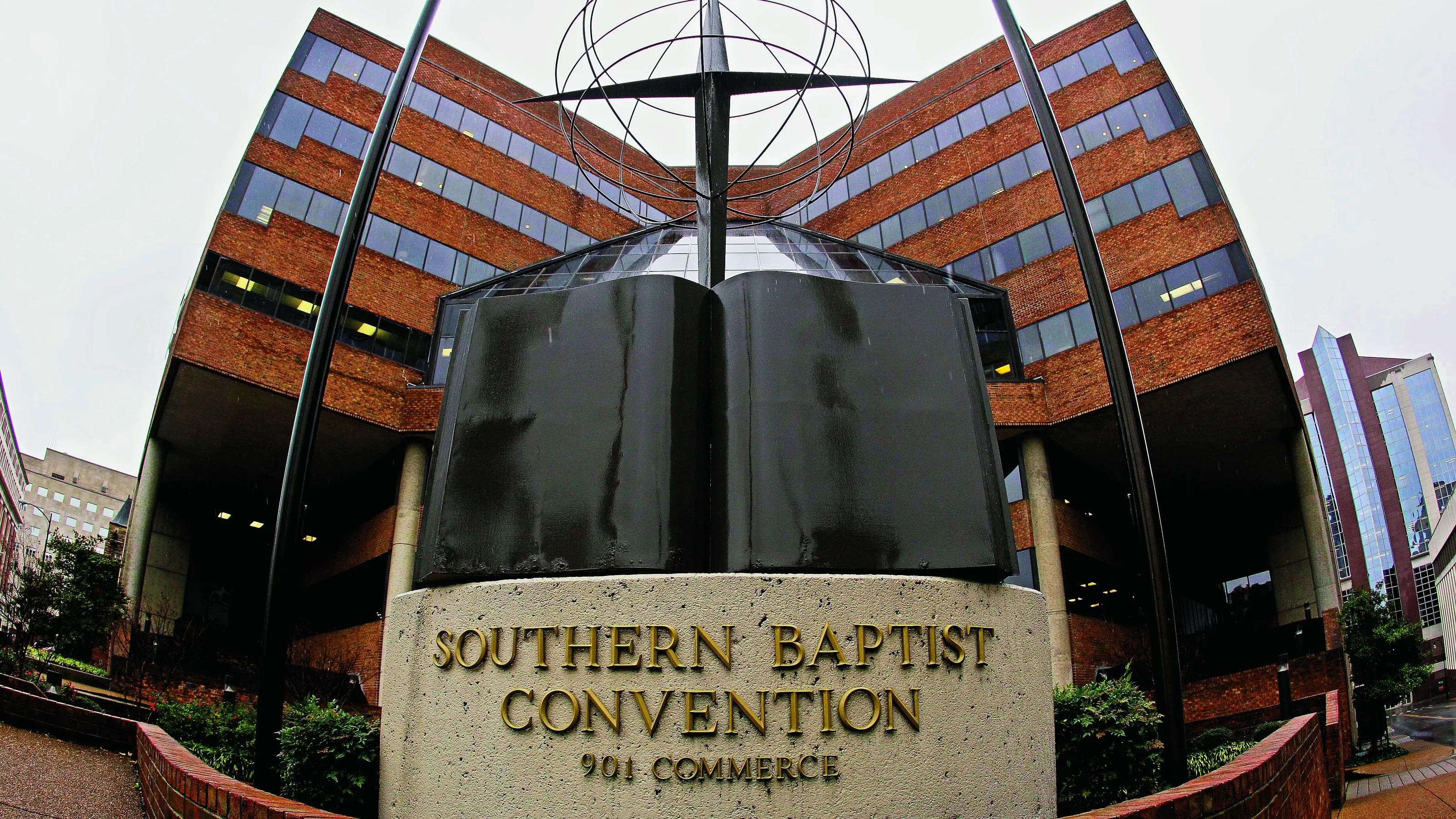Chances are, most Southern Baptists wouldn’t be able to tell you what once stood at 460 James Robertson Parkway in Nashville.
If you travel to that address today, there's little to see. But for years, it was the central hub of activity for the Southern Baptist Convention as the location of the SBC Executive Committee offices. With the recent news that the EC will list its current offices for sale, it's an excellent time to explore the moves the EC made in the past and how it ended up where it is today.
The origins of the EC extend to 1916 when M. H. Wolfe of Texas proposed to amend the SBC Constitution "to create one strong executive board which shall direct all of the work and enterprises fostered and promoted by this Convention." In 1917, the messengers approved the formation of a small committee empowered "to act for the convention during the interim … on all matters not otherwise provided for" and to advise convention boards "only on request."
A decade or so later, after the formation of the Cooperative Program, the Convention approved expanding and enlarging the EC's duties, most notably recommending an annual operating budget for the SBC and the allocation of CP funds to entities.
With expanded work came expanded staff, and EC grew under the leadership of Austin Crouch and subsequent leaders. During this time, the staff and leadership of the EC were housed in office space provided by the Baptist Sunday School Board in the JM Frost building. Built in 1913, this building can still be seen on Rosa Parks Blvd in Nashville, with the name of the BSSB still across the top. The EC was housed there until 1941 when they moved from the Frost Building to the new Sunday School Board Administration building at 127 Ninth Ave, where it occupied "seven attractive, comfortable and commodious rooms."
By 1949, the EC had increased to around a dozen regular employees, full- and part-time. Needing more space, the EC requested an entire floor in a new tower planned for the Sunday School Board. The Board generously made the whole third floor available, including offices for the Southern Baptist Foundation, and the EC took occupancy in 1952. By 1959, the EC had outgrown that generous space, now at 15 full-time employees. The lack of public space left the EC with an uncertain public profile, the lack of their own home belying the vital work they did for the SBC.
In 1958, the EC agreed to accept the donation of the renovated Frost Building. Still, subsequent studies led EC Executive Secretary-Treasurer Porter Routh to declare the building unfit for a multiagency occupation. The following discussion led to serious talks about moving the EC out of Nashville, a proposal which seemed to have considerable support.
A special committee studying the relocation settled on Tulsa as a centrally located place with “superior air service.” Eventually, opposition developed to such a distant removal, and in May 1960, it was recommended that the EC move to Memphis. During the meeting, several people opposed removal from Nashville, and a motion prevailed to refer the matter to a special committee. The following September, the committee recommended that a new site committee be approved to study future locations and that construction and removal be postponed until after 1964, the year of the Baptist Jubilee Advance Celebration. Still, sentiment developed for moving ahead, and the $1.2 million assigned by the SSB for the renovation of the Frost Building was placed in the care of the Southern Baptist Foundation for the use of the EC in constructing or purchasing a suitable building.
In 1961, the EC unanimously approved a recommendation to locate the new headquarters of the EC at 460 James Robertson Parkway. The four-floor octagonal building was modeled after ancient church buildings in the early Christian world and was said to be so well built it could be "turned sideways and rolled to the Mississippi River." The building provided offices not only for the EC but also for the Stewardship Commission, the Education Commission, the Christian Life Commission, the Southern Baptist Foundation, and the Seminary Extension Department.
As the SBC grew—and, subsequently, the work of the EC—the building became increasingly cramped for all the agencies it contained. Following Porter Routh's retirement in 1979 after more than 25 years of service, the building was showing its age and limits. At the suggestion of new leader Harold Bennett, an SBC Building Long-Range Study Committee was formed. It ultimately found the need for space was great for the various Nashville-based agencies, including the Historical Commission, who had requested space for its vast collection of historical materials housed in the Sunday School Board.
In 1981, SSB leader Grady Cothen offered to the EC a near-acre sized lot across from the SSB's administration building on Commerce Street. In accepting the lot, the EC expressed appreciation to Cothen “for this significant property transfer.” A year and a half later, the planning committee proposed a plan for a new building at a cost of $8 million. When some balked at the expense of a new building, the committee showed how the new building would meet the needs of the EC, including housing all seven smaller SBC agencies, meeting rooms for committees from across the country, energy efficiency, and future growth needs.
They noted that “if Southern Baptists grow by only 2% annually, by the year 2000, the need for space will be even greater.” The funds came from the sale of the existing building and future capital needs budget. The measure passed on the floor of the convention with a vote of 5,991-3,449, and by January of 1985, the EC occupied the building they still possess today.
Much has transpired across the SBC since that building was constructed. In 1997, the Deal for a New Century eliminated and combined many agencies. The rise of the Internet and social media has shrunk the Southern Baptist world, for better and worse, but made communication much more accessible across the board. Recent financial challenges, including lawsuits and the decline of CP giving, have led to the EC eliminating staff and downsizing their budget. Additionally, the SBC has not met that 2% growth goal, with a smaller membership now than it did when the building was built.
Anticipating a potential relocation in the future, messengers to the 2017 annual meeting in Phoenix approved the sale of the building at 901 Commerce Street, where the Executive Committee is currently housed along with the Southern Baptist Foundation, the Ethics and Religious Liberty Commission, the convention's Historical Library and Archives and the Seminary Extension.
History shows that as the needs of the SBC Executive Committee changed, the buildings that housed them changed, too. Time and necessity meant we had to move on from places like 460 James Robertson Parkway, where millions of dollars were funneled for mission work through the CP, and great men and women of the SBC did work that empowered untold gospel work across America.
Very few messengers at the most recent SBC meeting would remember the name of Porter Routh, but his service ensured that the work of the SBC would continue long after he was forgotten. It's not an understatement to say there are severe challenges facing the EC and the overall work of Southern Baptists. The changing tides of culture, reaping results of fallen leaders, sinful cover-ups, falling baptismal rates, and waning finances only add to the problem for anyone trying to lead Baptists in cooperation. The challenges facing the SBC today are different from those 100 years ago. Thankfully we have a proud history of leaders who faced those challenges head-on, working with EC members and other leaders to ensure the SBC is in a strong position to carry out its mission.
While the buildings and locations of the Southern Baptist Executive Committee have changed, the core mission of the SBC has remained constant: to support the spread of the gospel. Moving from 460 James Robertson Parkway and beyond, each decision to relocate has been driven by the needs of the time, ensuring that the EC could continue to serve Southern Baptists effectively. Leaders like Porter Routh and others understood that physical change is often a part of facing new challenges.
It's not the address that defines the work—it’s the commitment to spreading the gospel. As the SBC faces today’s challenges, we can take comfort in the fact that even though buildings may change, our purpose remains steadfast.
Editor's Note: As a part of its commitment to fostering conversation within the Southern Baptist Convention, the Baptist Review may publish editorials that espouse viewpoints that are not necessarily shared by the TBR team or other contributors. We welcome submissions for responses and rebuttals to any editorials as we seek to host meaningful conversations about the present and future of our convention.


